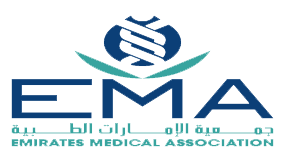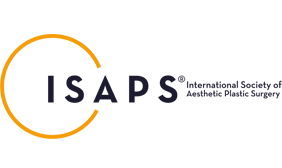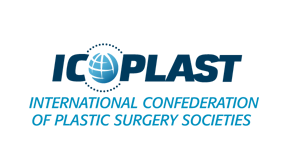Deciding when to get liposuction? Ideal for those close to target weight seeking to remove stubborn fat areas. Consult with specialists.
When to Get Liposuction: Your Ultimate Guide
Liposuction is a popular cosmetic surgery procedure that removes fat deposits from specific areas of the body. If you’re considering liposuction, it’s important to understand when it’s the right time to undergo the procedure. This ultimate guide covers everything you need to know about deciding when to get liposuction.
Liposuction, also known as lipoplasty or liposculpture suction lipectomy, is a cosmetic surgical procedure that removes stubborn fat deposits in different areas like the abdomen, hips, thighs, arms, neck, back, calves, and ankles. It sculpts these body areas by improving body contours and proportion.
So when should you consider getting a liposuction procedure? There are a few key factors to take into account when determining the optimal timing.
Book A Consultation With Dr Shehzadi Tasneem
Top-rated Plastic Surgeon For Liposuction in Dubai
Installment Plan Available
When to Get Liposuction
Here are the best times to undergo liposuction:
You Can’t Eliminate Fat through Diet and Exercise
If you have fat deposits that are resistant to diet and exercise, liposuction may be an effective solution. Liposuction removes fat that is otherwise impossible to eliminate through traditional weight loss methods.
Your Weight is Stable
It’s important to have a stable body weight before getting liposuction. If you are still actively gaining or losing weight, the results of liposuction may not come out as expected. Wait until your weight has stabilized within 10 pounds for at least 6 months before considering the procedure.
You Have Good Skin Elasticity
The elasticity of your skin plays a big role in achieving optimal results from liposuction. If your skin lacks elasticity due to age or other factors, it may not redrape well over the new body contours after fat removal. Liposuction generally works better for those with good skin tone and elasticity.
You’re in Good Health
Make sure you are in overall good health before undergoing liposuction. Be physically fit with good muscle tone, and don’t have any illnesses or chronic health conditions. Having stable physical health reduces surgical risks and supports proper healing.
You Have Realistic Expectations 
It’s vital to understand that liposuction has limitations. Have realistic expectations about the potential results. Liposuction slims and reshapes specific areas but does not help with cellulite or loose, sagging skin. Combining liposuction with other body contouring procedures can help address these issues.
Now that you know the optimal timing for liposuction, let’s look at the key considerations for the procedure in more detail.
Body Areas for Liposuction
The most common body parts treated with liposuction include:
- Abdomen
- Flanks or “love handles”
- Upper arms
- Inner thighs and knees
- Hips and buttocks
- Back and shoulders
- Neck and chin
- Ankles and calves
The best candidates have localized fat deposits in specific body zones that don’t respond to diet and exercise.
Amount of Fat to Be Removed
Liposuction can safely remove larger volumes of fat in cases marked by:
- Good skin elasticity
- Muscle tone
- Normal body weight
Your surgeon will determine how much fat can be safely removed from each area during a single procedure. Removing fat cells leaves behind space that may ultimately fill up with other tissues if too much fat gets removed.
Liposuction Techniques
There are several liposuction techniques your surgeon may use:
- Tumescent liposuction: A saline solution is injected to swell and numb the area before fat gets suctioned out.
- Ultrasound-assisted liposuction (UAL): Energy gets transferred to fat cells before their removal.
- Laser assisted liposuction (LAL): Laser energy helps liquefy fat before it gets suctioned out.
- Power assisted liposuction (PAL): A cannula with mechanical motion allows easier fat removal.
Your surgeon will select the best technique based on the treatment area and amount of fat to be removed.
Preparing for Liposuction 
Properly preparing for your liposuction procedure is vital for safe, successful fat removal and shaping. Here is how to prepare:
- Get lab testing done as required
- Take medications as prescribed by the surgeon
- Arrange for a ride home and someone to assist in initial recovery
- Stock up on recommended nutritional supplements to support healing
- Stop smoking for at least 2 weeks before and after (smoking impairs circulation and healing)
- Avoid blood-thinning medications like aspirin and anti-inflammatory drugs
- Follow all pre-op instructions provided by your surgeon
Proper preparation helps reduce risks and supports optimal outcomes.
Liposuction Recovery Process
The liposuction recovery timeline varies based on the extensiveness of treatment. Here is what to expect:
| Phase | Timeline | What to Expect | Tips for Comfort |
| Initial Recovery | First 48 hours | – Swelling around treated areas – Bruising – Discomfort and soreness – Numbness from anesthesia | – Get lots of rest – Take prescribed medications for pain and swelling – Keep compression garment on |
| Early Healing | 1 week | – Moderate swelling and bruising – Stiffness and soreness – Possible minor drainage from incisions | – Increase mobility gradually – Take brief, gentle walks – Continue medications |
| Intermediate Healing | 2 weeks | – Swelling and bruising subsiding<br>- Improved mobility and less discomfort<br>- May return to work | – Avoid strenuous activity – Drink lots of fluids – Use cold compresses |
| Later Healing | 3-6 weeks | – Residual swelling continues to resolve – Numbness fades – Can resume exercise | – Perform light cardio and strength training – Massage treated areas to reduce swelling – Use compression garments during exercise |
| Final Healing | 3-6 months | – See final results – Very minor swelling may persist | – Maintain a healthy diet and active lifestyle – Protect treated areas from sun exposure |
Some numbness and swelling may persist for 6 months or more. Follow all post-op instructions from your surgeon to support proper healing.
Liposuction Results
When performed by an experienced, board-certified plastic surgeon, liposuction can provide exceptional aesthetic improvements by:
- Smoothing stubborn fat bulges and cellulite
- Refining body contours
- Tightening loose, sagging skin
- Improving overall body proportions
Note that while the fat cell removal achieved by liposuction is permanent, maintaining a stable body weight is vital for long-term results.
Liposuction Cost
The average cost of liposuction in the UAE ranges from AED 16,000 – 25,000 depending on the body areas treated and type of anesthesia used. Some factors affecting the cost include:
| Type of Liposuction | Average Cost Range | Factors Affecting Cost |
| Tumescent Liposuction | AED 16,000 – 20,000 | – Number of areas treated – Amount of fat removed |
| Ultrasound-Assisted Liposuction (UAL) | AED 20,000 – 25,000 | – Size and number of treated areas – Extent of fat removal needed |
| Laser-Assisted Liposuction (LAL) | AED 22,000 – 28,000 | – Number of body areas addressed – Amount of fat to be removed |
| Power-Assisted Liposuction (PAL) | AED 18,000 – 23,000 | – Complexity involved – Expected time and effort |
| Multiple Area Liposuction | AED 25,000 – 30,000 | – Number of total areas addressed – Combination technique used |
Additional factors affecting surgical fees:
- Surgeon’s expertise and qualifications
- Use of general anesthesia
- OR fees and facility charges
- Post-op garments and medications
Many surgeons offer financing plans to help patients budget for liposuction.
When to Get Liposuction: Bottom Line
The ideal time to undergo liposuction is when you have localized fat deposits that won’t budge with diet and exercise, your weight is stable, your skin has good elasticity, and you understand the limitations and risks involved. Preparing properly both physically and mentally helps ensure safe, successful body contouring improvements.
Determining when to get liposuction depends on factors like diet and exercise resistance, weight stability, skin elasticity, and health status. Preparing properly pre-op and diligently following post-op instructions supports safe, aesthetically pleasing outcomes from body contouring with liposuction. This procedure can provide permanent improvements to stubborn fat deposits.
Book a Consultation with the Best Plastic Surgeon in Dubai, Dr Shehzadi Tasneem Sultan to determine if liposuction is right for you.
Pre and post-surgery liposuction results show how someone feels and looks before and after an operation, helping doctors see if the surgery was successful. Lipo B12 injections enhance energy levels by giving your body important vitamins that help you feel more awake and active. It’s like a special boost to keep you going strong! Evaluating Arm Lipo Advantages means looking at the good things about getting fat removed from your arms, like having slimmer arms and feeling more confident.
Frequently Asked Questions
Who is the best candidate for liposuction?
The best candidates for liposuction are men and women with good skin elasticity and localized fat deposits in areas like the abdomen, thighs, hips, and arms that don’t respond to diet and exercise.
What is the recovery time after liposuction?
The liposuction recovery timeline is usually around 6 weeks until you can resume normal activity, though it may take 3-6 months for swelling to fully resolve and see final results.
How long do the results of liposuction last?
Provided your weight remains stable, the fat cell removal achieved by liposuction is permanent. The treated areas should maintain improved contours unless you gain a significant amount of weight.
How painful is liposuction?
There is usually moderate pain, swelling and soreness for the first few days following liposuction. Prescription medications help control discomfort during the acute recovery phase.
Does liposuction leave scars?
Liposuction incisions are small and strategically placed in natural body creases or stretch marks where they will fade and blend in over time. Scarring is typically minimal.












